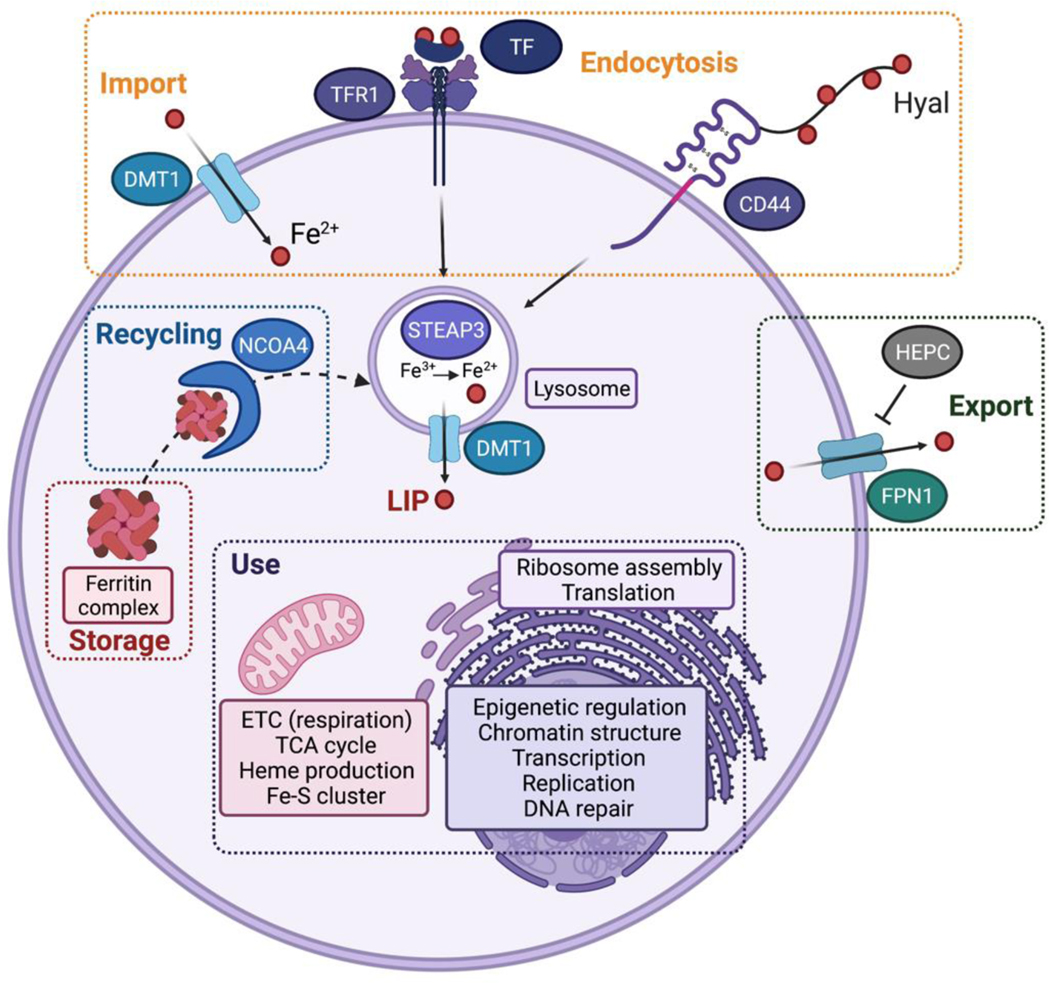Figure 1. Cellular iron homeostasis.
In mammalian cells, iron can be imported through divalent metal transporter 1 (DMT1, alias SLC11A2) or internalized by means of endocytosis involving the canonical transferrin receptor 1 (TFR1)/transferrin (TF) or the alternative CD44/Hyaluronate (Hyal) pathways. Upon maturation of endocytic vesicles, ferric iron is released from TF, reduced by six-transmembrane epithelial antigen of prostate 3 (STEAP3) and ferrous iron translocates to the cytosol. Iron can be stored as ferritin complexes, which can be recycled by means of ferritinophagy involving nuclear receptor coactivator 4 (NCOA4.) Alternatively, iron can be exported outside of cells through ferroportin-1 (FPN1, alias SLC40A1), whose level is regulated by hepcidin (HEPC). Iron traffics towards distinct compartments where it is required to mediate key cellular processes.

